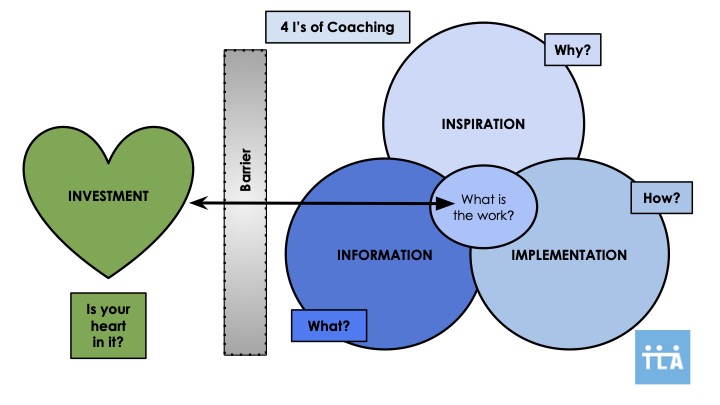Our current system is asking a lot of teachers and if you’ve ever worked in schools supporting adult learners in new instructional practices, you know that coaching adults is both rewarding and complex. Teachers have a variety of belief systems, content knowledge and “go-to” instructional strategies that are deeply embedded and often hard to change. Nevertheless, we know that instructional coaching actually does work to move teacher practice and improve student achievement. The question we want to answer is, “How do we best match our coaching moves to the needs of the teacher?”
There have been many insightful and powerful books written about coaching. We have been informed and supported by research and ideas about coaching from thought leaders across many disciplines, including education, medicine, and business. Yet our experience in coaching in hundreds of classrooms across the country has led us to develop some new ideas to navigate the complexities in the coaching relationship.
So here’s a mental model that we’ve created–an idea still in its infancy as we continue to refine through practice and our own coaching –that provides a visual representation of the complexity of the coaching relationship. We call it the “4 I’s of Instructional Coaching.

Initially we began with only 3 I’s, building off the work of our colleague Connie Jacquays who helped us name and categorize what teachers need in order to make lasting change in the classroom. Coaches need to support teachers as they shift their beliefs about teaching and learning, deepen their content knowledge, and refine their instructional practices. When we thought about what a teacher “needs” in order to do those three things we explored these categories.
- When a teacher needs to shift their beliefs, coaching looks a lot like inspiration.
- When a teacher needs to deepen their content knowledge, coaching looks a lot like providing information.
- When a teacher needs to refine their instructional practice, coaching looks a lot like helping with implementation.
Those 3 I’s were aligned with our experience, easy to remember and seemed to resonate with other coaches that we worked with. It felt like we were onto something.
However, the more that we thought about this idea, the more we realized that those 3 I’s were insufficient in and of themselves. Coaches could inspire, inform and implement ad nauseum and still not see change in the teachers with whom they worked. We observed that many times there is an invisible barrier often to the work of coaching in the first place. Teachers often have many competing priorities, from new curricular initiatives and challenging classroom dynamics to personal responsibilities that compete with professional ones, such as caring for young children or looking after aging parents. All of this can lead to what feels like resistance to coaching.
This noticing led us to name our fourth I in our framework – investment. When a teacher doesn’t have agency and ownership over their learning, change, if it happens at all, is superficial. And that’s because there is a misalignment between what matters to the teacher (at least in this moment) and the work of the coach. It’s these times that can be so tricky, and even demoralizing, for both the coach and the teacher.
That’s why the fourth I (investment) is so critical and why we suggest that instead of beginning with action, the coaching shifts to a conversation where the coach is an active listener. The art of listening to understand what is going on for a teacher is just as much the work of coaching as dazzling them with an inspirational demonstration lesson, digging deeper into standards to understand the information, or sitting side-by-side and lesson planning to implement an effective strategy.
It is our hope that this mental model and the 4 I’s help you think intentionally about matching your coaching to the needs of teachers. In our next blog post, we will unpack some specific examples for how you might use this 4 I’s framework in your thinking and work with teachers and students.






